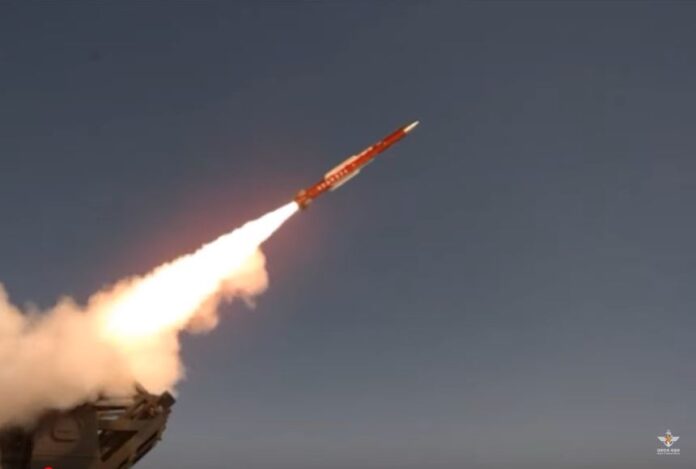The Republic of Korea L-SAM (Long Range Surface to Air Missile) successfully conducted a missile intercept in testing according to local media reports of 22 November 2022 citing government sources.
L-SAM is intended to counter the growing ballistic missile threat presented by the Democratic Peoples Republic of Korea (North Korea). Its development was initiated in 2019 by the Agency for Defense Development (ADD) through an effort by the firms LIG Nex1 and Hanwha.
The system includes two missile types one for missiles and one for aircraft linked launched from trucks linked with a trailer-mounted S band AESA radar. The former will destroy incoming ballistic missiles in their terminal flight phase at altitudes up to 60 km. This test is significant in that it engaged and destroyed a target closely simulating an operational scenario. This test series also included demonstration of the anti-aircraft missile version. A prior test in February 2020 demonstrated the missiles’ ability to maintain its proper flight trajectory.
The L-SAM missile and mobile multi-function radar are reported to be able to detect a missile at 310 km and aircraft at 230 km. The system can address multiple targets simultaneously tracking and engaging up to 10 missiles at 150 km distance. Being truck/trailer mounted will allow the system to be relocated to reduce the potential of it being targeted.
L-SAM is an element of a broader initiative to counter North Korean artillery, rockets, missiles and aircraft attacks against the country which has major population centers within striking range of the border. ADD’s web site describes L-SAM as “a cutting-edge indigenous weapon system currently under development to defend against long range/high altitude aerial vehicles, providing multi-layered missile defense in combination with Cheongung II.” L-SAM addresses the same role as the US THAAD anti-missile batteries which are also positioned in the country. However, the ROK administration has given priority to the fielding of its own indigenous developed and produced capability. L-SAM is planned to become operational in 2026.
by Stephen W. Miller













